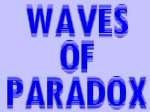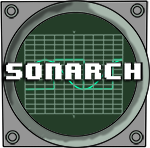http://drdissonance.tumblr.com/post/285 ... ubbish-and
I do love theory!!!
Music Theory
90 posts
• Page 4 of 4 • 1, 2, 3, 4
Re: Music Theory
Tubeyou
You are the hero My Little Remix deserves, not the one it needs.
So we’ll hunt you. Because you can take it. Because you’re not our hero.
You’re a silent guardian of music, a watchful protector of songs.
A doctor of dissonance.
-Phillypu
You are the hero My Little Remix deserves, not the one it needs.
So we’ll hunt you. Because you can take it. Because you’re not our hero.
You’re a silent guardian of music, a watchful protector of songs.
A doctor of dissonance.
-Phillypu
-

Dr_Dissonance - Posts: 634
- Joined: 01 Jul 2011 07:45
- Location: Australia
Re: Music Theory
Great lesson and great examples. But what else could you expect from Dr Dissonance?
YouTube
SoundCloud
Haiti Charity Album
Haiti Charity Album
"A good composer does not imitate; he steals."
-Igor Stravinsky
SoundCloud
Haiti Charity Album
Haiti Charity Album
"A good composer does not imitate; he steals."
-Igor Stravinsky
-

WavesOfParadox - Posts: 261
- Joined: 29 May 2012 18:02
Re: Music Theory
My god, everything I know is a lie.
But I can't apply anything I learn until I can actually make a song. Which i'm working on.
So I may be back with some other question soon.
But I can't apply anything I learn until I can actually make a song. Which i'm working on.
So I may be back with some other question soon.
My goal is to be capable of making any kind of music that strikes my fancy, and do it well.
Twitter @SonarchMusic
Soundcloud
Tumblr
Twitter @SonarchMusic
Soundcloud
Tumblr
-

Sonarch - Posts: 1007
- Joined: 15 Jun 2012 11:12
- Location: Maine
- OS: Windows (Big circular ones)
- Primary: FL Studio
Re: Music Theory
I was told that, but I figured out it was a lie pretty quickly
viewtopic.php?f=8&t=9979 SA2: Iapetus
-

VINXIS - Posts: 864
- Joined: 11 Jun 2012 16:42
- Location: Edmonton, Canada
- Primary: Ableton 9 live (like 99% of the time)
- Cutie Mark: pls
Re: Music Theory
Dr_Dissonance wrote:http://drdissonance.tumblr.com/post/28597721135/major-happy-minor-sad-why-thats-rubbish-and
I do love theory!!!
I'm currently reading The Language of Music by Deryck Cooke, which goes into a lot more detail about exactly that.
-

Kopachris - Posts: 166
- Joined: 24 Jun 2012 22:18
Re: Music Theory
Dr_Dissonance wrote:http://drdissonance.tumblr.com/post/28597721135/major-happy-minor-sad-why-thats-rubbish-and
I do love theory!!!
My mind is blown. Everything I know is a lie.
I... I think I need to think about my life.
- Spark
- Posts: 42
- Joined: 16 Mar 2012 04:48
Re: Music Theory
Bump!
Found another really good starter website, arranged wiki-style: http://www.oscarvandillen.com/Outline_o ... sic_theory
Found another really good starter website, arranged wiki-style: http://www.oscarvandillen.com/Outline_o ... sic_theory
-

Kopachris - Posts: 166
- Joined: 24 Jun 2012 22:18
Re: Music Theory
So I'm not sure if theory helps with this but, I have trouble with really noticeable melodies that go well with the chords... got any tips?
20 something Transgirl that makes sounds called music
Soundcloud | Facebook | Bandcamp | Blog
Soundcloud | Facebook | Bandcamp | Blog
Placing my tongue on the GR meter to taste the gain reduction I some how improved my skills.
-

Acsii - Posts: 2457
- Joined: 19 Apr 2012 01:55
- Location: Melbourne, Australia
- OS: OS X
- Primary: Logic Pro X
- Cutie Mark: Old round oscilloscope
Re: Music Theory
Essper wrote:So I'm not sure if theory helps with this but, I have trouble with really noticeable melodies that go well with the chords... got any tips?
Work on chords/voice leading and melody at the same time. Plan your voice leading so that for whichever voice you choose for your melodic line (soprano, alto, tenor, or bass), the voice leading forms an outline of your melody, then fill in the outline with motifs and ornaments and stuff. Also, when planning your chord progressions, keep musical form in mind and what function the chord progression serves. Classical Form by William Caplin goes into extensive detail about this, and though it's primarily meant for analyzing the music of Mozart, Haydn, and Beethoven, the same principles can be (and regularly are) applied to almost any type of music. After you read it, you won't be able to stop yourself from recognizing various formal functions, like presentation phrases, continuation phrases, codettas, etc. in whatever music you normally listen to.
I'll write up a summary of the most important formal functions to get you started tonight. Gotta go to bed now, though.
-

Kopachris - Posts: 166
- Joined: 24 Jun 2012 22:18
Re: Music Theory
Whoa I guess I need to read up some more, I only understood about half of that wikipedia thing.
My goal is to be capable of making any kind of music that strikes my fancy, and do it well.
Twitter @SonarchMusic
Soundcloud
Tumblr
Twitter @SonarchMusic
Soundcloud
Tumblr
-

Sonarch - Posts: 1007
- Joined: 15 Jun 2012 11:12
- Location: Maine
- OS: Windows (Big circular ones)
- Primary: FL Studio
Re: Music Theory
Kopachris wrote:ornaments
This was an awesome read, thank you.
-

Magnitude Zero - Posts: 550
- Joined: 12 Mar 2012 13:11
- OS: Windows 7
- Primary: FL Studio 10
- Cutie Mark: Horse butt not large enough
Re: Music Theory
Theory is essential for me in all musical things, all the time. I've studied it for a while, primarily self-taught. Taking a high-school class (which I realized was going to be pretty easy when my teacher mentioned that the hardest subject we would get to was figured bass  ).
).
I use music theory all the time; however, I'm no genius that does freaky-awesome music theory processes or anything. (Wouldn't that be awesome, to be some musical savant? I'm jelly)
It's just that, more than anything, a well-built music vocabulary, good ear training, and simple musical immersion will allow all that music theory to just "happen". The theory is still all there (sort of), but when working out relatively basic things, all that theory will just come to one's mind naturally, IMHO.
I'd say that, as long as you have pretty decent rhythm, pretty decent ear, and a good understanding of chords & the circle of fifths, you can make some semblance of music; when those 3 skills came together for me, personally, I felt that the musical world suddenly "made sense". And from there, nothing can really stop you from learning more, if I may put my 2 cents in.
I use music theory all the time; however, I'm no genius that does freaky-awesome music theory processes or anything. (Wouldn't that be awesome, to be some musical savant? I'm jelly)
It's just that, more than anything, a well-built music vocabulary, good ear training, and simple musical immersion will allow all that music theory to just "happen". The theory is still all there (sort of), but when working out relatively basic things, all that theory will just come to one's mind naturally, IMHO.
I'd say that, as long as you have pretty decent rhythm, pretty decent ear, and a good understanding of chords & the circle of fifths, you can make some semblance of music; when those 3 skills came together for me, personally, I felt that the musical world suddenly "made sense". And from there, nothing can really stop you from learning more, if I may put my 2 cents in.
I'm always half-asleep, and I hate dubstep.
Also, you know that other, way more awesome Nomnom guy who shows up on EQD sometimes? THAT PERSON IS NOT ME.
We just happen to have similar pseudonyms.
Also, you know that other, way more awesome Nomnom guy who shows up on EQD sometimes? THAT PERSON IS NOT ME.
We just happen to have similar pseudonyms.
-

Omnomnomnom - Posts: 74
- Joined: 22 Feb 2012 15:59
Re: Music Theory
Magnitude Zero wrote:Kopachris wrote:ornaments
This was an awesome read, thank you.
Welcome!
Musical Form 101
Prerequisites:
- The ability to read music
- Understanding of the major, natural minor, and harmonic minor scales
- A general understanding of chords, including their inversions and notation
- Common practice voice leading
1. Basic chord progressions and their functions
The basic harmonic functions
Caplin divides the chords of the diatonic scale into three groups based on their function in tonality: Tonic, Pre-dominant, and Dominant. You should probably already know that dominant harmony tends to pull towards the tonic. Similarly, tonic harmony tends to pull towards pre-dominant, and pre-dominant, while it doesn't really pull towards dominant harmony, does serve to prepare the listener for it. Caplin includes two chords as pre-dominant: II and IV. He also includes two chords as tonic: I and VI (the latter particularly in first inversion), and two chords as dominant: V and VII. The fourth scale degree usually has a tendency towards the fifth scale degree (due to how we've been listening to music for hundreds of years), hence II and IV, which both include the fourth, lead towards dominant harmony. The V and VII chords both contain the prominent seventh scale degree, which leads to the tonic. (Note: This means that when using the minor mode, the seventh must be raised as in the harmonic minor for the dominant function to exist.) From this, you can probably guess that I and VI are both included as tonic because they contain the tonic scale degree. Generally, the functional tones of a chord are the root and third, leaving the fifth as less important. Try it for yourself: Play a naked fifth--it sounds like a naked fifth, relatively hollow and empty. Play a third--it sounds richer, like it could be a chord.
Harmonic prolongation
Harmonic prolongation is probably the most basic type of harmonic progression used throughout the common practice period. Harmony is said to be prolonged when the same harmony begins and ends a progression. Most commonly used are tonic and dominant prolongation, due to their importance. (Note: The contrast between tonic and dominant is the driving force behind most western classical music.) To keep the prolongation perceptible to the listener, prolongational progressions are usually limited to three or four chords, and a couple rules are usually enforced. There are only a few types of progressions used for prolonging harmony.
Pedal point: The most basic way of prolonging harmony isn't actually a progression at all. The harmony is simply sustained, either as one really long chord (ex. 1), or the functional tone could be sustained while other chords are played around it (ex. 2). When this occurs, the progression could be analyzed as every chord including the sustained tone.

Ex. 1: Melody plays over a tonic pedal. Ignore the highlighting--that's just Finale being stupid.

Ex. 2a: Tonic pedal in the soprano voice with other chords underneath. Could be analyzed C C7/E D7 G11

Ex. 2b: Tonic pedal in bass voice with other chords above. Stronger prolongation.
Neighbor chords: When the first and last chords are on the same root and in the same position. Examples: I-II-I, V-IV-V, I6-III-I6, V-VII-V, I-VII-VI-I, I-III-II-I, I-III-IV-I, etc. Progressions to avoid: Tonic prolongation where the dominant is the second-to-last chord, because it forms a perfect authentic cadence.
Passing chords: When the first and last chords are in different position. Examples: I-II-I6, I64-II6-III-I, etc. Progressions to avoid: A progression which begins and ends with a different root, but same harmonic function (e.g. V6-VI-VII) is not a harmonic prolongation--it is a sequence.
Substitute chords: Prolongations can be extended by adding the other chord of the same function in the middle. Example: I-III6-VI-IV-I6.
Sequence
Pretty simple to understand. Just pick an interval and do a root progression based on it (e.g. descending third: I-VI-IV-II-VII-V-III-I). The main purpose of a sequential progression is to destabilize the prevailing harmony, often for the purpose of modulation to a new key (i.e. add variety). Therefore, the progression usually begins with a functional chord in one harmonic region and ends with a functional chord in the same or another harmonic region. The fundamental idea of a sequence is a consistent intervallic motion in one or more of the voices (usually soprano and bass). Therefore, while a consistent root progression is the simplest form of sequence, you can liven things up a bit with inversions, as long as your voices form a consistent pattern. In sequential progressions where the bass moves by a third, you can even fill in the leap with inverted passing chords; this will give the progression some harmonic functionality that may or may not be desirable (or, more likely, won't really matter). (Note: Caplin's book goes into way more detail about sequential progressions than I can fit here.)
Cadence
Also pretty simple to understand. Cadences act as a point of repose, and help solidify the sense of key. There are two types: Authentic cadences and Half cadences. In an authentic cadence, harmony goes from dominant to tonic, and in a half cadence, from tonic or pre-dominant to dominant. In a full authentic cadence, the harmony actually goes tonic, pre-dominant, dominant, tonic, but just as often the first or second one of those is left off. An authentic cadence will always use V-I as the last two chords, never VII or VI, and a half cadence will always use V as the last chord, never VII. An authentic cadence which ends in VI is called an "escaped cadence," and is one of the most over-used tricks in the book. It works really well for keeping things interesting by delaying the actual cadence, but use it sparingly. (You can also use a different chord at the end, but VI is the most common choice.)
Part 2: Basic formal functions, next post -- coming soon!
Last edited by Kopachris on 05 Oct 2012 11:35, edited 3 times in total.
-

Kopachris - Posts: 166
- Joined: 24 Jun 2012 22:18
Re: Music Theory
Additional notes about harmonic progressions before I continue: First, Caplin doesn't actually include VI as a tonic harmony or VII as a dominant harmony; I included them for simplicity and to give you more options for your prolongational progressions. Second, the only prolongationals that Caplin exposes are tonic (using the I chord and its inversions) and dominant (using the V chord and its inversions), as those are the only ones that show up as such in the literature Caplin studied. However, it is theoretically possible to form a prolongational on any scale degree. The only difficulty is that anything other than tonic or dominant will probably be interpreted by the listener as tonic or dominant of another tonal region. Third, Caplin extends the idea of substitute chords to include any chord which shares two tones with the harmony being prolonged. I left that part out for (once again) simplicity, and because, in the event you decide to form a prolongational on anything other than tonic or dominant, you'll want to keep your functional chords as closely related as possible.
2. Basic formal functions
Introduction
No, I'm not introducing "basic formal functions"--the introduction is actually one of the basic formal functions. In the context of a theme, it exists "before the beginning." It's part of the full theme unit, but isn't really part of the theme itself. It could be anything from a scrap of motivic material to a full-blown four-measure melody complete with a chord progression. It doesn't really serve any purpose except as filler, though it may sometimes be the most recognizable part of the theme. In electronic music, this is what your white noise transitions usually are.
Codetta
Just as the introduction exists before the beginning, the codetta exists after the end of a theme. The codetta can also be anywhere from a single chord to a couple measures. Usually, if a theme features a codetta, it will feature multiple codettas. Most often, the codetta will prolong whatever harmony the theme ended with (i.e. if half cadence, then it prolongs dominant harmony, if authentic cadence, then it prolongs tonic harmony). The cadence you'll see referred to in music theory textbooks as a "plagal cadence" (IV-I), is most often actually a codetta. You know how the big, bombastic symphonies you're used to will repeat their final chord or final cadence a couple times? Those are codettas.
Basic idea and contrasting idea
Sometimes referred to in music theory textbooks as "phrase members." The basic idea is what a theme will be recognized by, usually a two real measure unit (keep in mind that a real measure isn't always the same as a notated measure if tempo is extreme). Usually contains one or two motifs and a prolongational chord progression. A contrasting idea is the same unit as the basic idea, but with differing harmonic and melodic content. You can't have a contrasting idea without a corresponding basic idea, but you can have a basic idea without a contrasting idea.
Antecedent and consequent
Each contains the basic idea, a contrasting idea, and a cadence, in that order (forming a full phrase). An antecedent will end with a half cadence, and a consequent will end with an authentic cadence. Pretty simple.
Presentation phrase
Contains a basic idea followed by the basic idea repeated, possibly varied. Possible variations include: statement and response (where the repeat is harmonized a fifth above), sequence (where the repeat is harmonized by some other interval), and direct repeat (where the harmony is the same). In each of these, it's the harmony which is important; the melody can do pretty much whatever it wants, as long as the same motivic material is used. The point is that by repeating the basic idea, you define its boundaries, thus forming a coherent presentation. A presentation phrase does NOT end with a cadence.
Continuation phrase
May or may not use the same motivic material from whatever precedes it, but the harmonic content is characterized as generally less stable. You'll often find sequence used (melodic, harmonic, or both), harmonic rhythm will usually increase, and everything will generally be broken down into smaller units (e.g. one measure of motivic material repeated, rather than two). A continuation phrase always ends with a half cadence or authentic cadence.
Compound basic idea
Basically just an antecedent/consequent without the cadence.
Full themes
Full themes are constructed from antecedents, consequents, presentation phrases, compound basic ideas, and continuation phrases. Antecedents, compound basic ideas, and presentation phrases always have to go first and are mutually exclusive, while consequents and continuation phrases always have to go second and are mutually exclusive. The two named theme types are the "period," formed from an antecedent and consequent, and the "sentence," formed from a presentation phrase and a continuation phrase. In a period, the basic idea of the antecedent and the basic idea of the consequent should be harmonically identical, though the two contrasting ideas may differ from each other. Caplin considers other combinations "hybrid themes." A hybrid theme consisting of a presentation phrase and a consequent is extremely uncommon because the basic idea is stated three times in a row. The other hybrid themes are used quite freely depending on the needs of the situation
Well, there you go. Those are the basics. The book goes into way more detail, including compound themes and full-movement forms, and I simplified a few things, but that should help out if any of you are having trouble with form.
2. Basic formal functions
Introduction
No, I'm not introducing "basic formal functions"--the introduction is actually one of the basic formal functions. In the context of a theme, it exists "before the beginning." It's part of the full theme unit, but isn't really part of the theme itself. It could be anything from a scrap of motivic material to a full-blown four-measure melody complete with a chord progression. It doesn't really serve any purpose except as filler, though it may sometimes be the most recognizable part of the theme. In electronic music, this is what your white noise transitions usually are.
Codetta
Just as the introduction exists before the beginning, the codetta exists after the end of a theme. The codetta can also be anywhere from a single chord to a couple measures. Usually, if a theme features a codetta, it will feature multiple codettas. Most often, the codetta will prolong whatever harmony the theme ended with (i.e. if half cadence, then it prolongs dominant harmony, if authentic cadence, then it prolongs tonic harmony). The cadence you'll see referred to in music theory textbooks as a "plagal cadence" (IV-I), is most often actually a codetta. You know how the big, bombastic symphonies you're used to will repeat their final chord or final cadence a couple times? Those are codettas.
Basic idea and contrasting idea
Sometimes referred to in music theory textbooks as "phrase members." The basic idea is what a theme will be recognized by, usually a two real measure unit (keep in mind that a real measure isn't always the same as a notated measure if tempo is extreme). Usually contains one or two motifs and a prolongational chord progression. A contrasting idea is the same unit as the basic idea, but with differing harmonic and melodic content. You can't have a contrasting idea without a corresponding basic idea, but you can have a basic idea without a contrasting idea.
Antecedent and consequent
Each contains the basic idea, a contrasting idea, and a cadence, in that order (forming a full phrase). An antecedent will end with a half cadence, and a consequent will end with an authentic cadence. Pretty simple.
Presentation phrase
Contains a basic idea followed by the basic idea repeated, possibly varied. Possible variations include: statement and response (where the repeat is harmonized a fifth above), sequence (where the repeat is harmonized by some other interval), and direct repeat (where the harmony is the same). In each of these, it's the harmony which is important; the melody can do pretty much whatever it wants, as long as the same motivic material is used. The point is that by repeating the basic idea, you define its boundaries, thus forming a coherent presentation. A presentation phrase does NOT end with a cadence.
Continuation phrase
May or may not use the same motivic material from whatever precedes it, but the harmonic content is characterized as generally less stable. You'll often find sequence used (melodic, harmonic, or both), harmonic rhythm will usually increase, and everything will generally be broken down into smaller units (e.g. one measure of motivic material repeated, rather than two). A continuation phrase always ends with a half cadence or authentic cadence.
Compound basic idea
Basically just an antecedent/consequent without the cadence.
Full themes
Full themes are constructed from antecedents, consequents, presentation phrases, compound basic ideas, and continuation phrases. Antecedents, compound basic ideas, and presentation phrases always have to go first and are mutually exclusive, while consequents and continuation phrases always have to go second and are mutually exclusive. The two named theme types are the "period," formed from an antecedent and consequent, and the "sentence," formed from a presentation phrase and a continuation phrase. In a period, the basic idea of the antecedent and the basic idea of the consequent should be harmonically identical, though the two contrasting ideas may differ from each other. Caplin considers other combinations "hybrid themes." A hybrid theme consisting of a presentation phrase and a consequent is extremely uncommon because the basic idea is stated three times in a row. The other hybrid themes are used quite freely depending on the needs of the situation
Well, there you go. Those are the basics. The book goes into way more detail, including compound themes and full-movement forms, and I simplified a few things, but that should help out if any of you are having trouble with form.
-

Kopachris - Posts: 166
- Joined: 24 Jun 2012 22:18
Re: Music Theory
The prerequisites are something not everyone knows, but i can read music these posts do help thanks
Hello there I am new here, I like to UM do things that make me hated by kids in school like watch mlp:fim, try to make dubstep, be a orchestralfag, and not know what genre is cool right now. Maybe trap IDK
-

Partyraw - Posts: 19
- Joined: 27 Sep 2012 09:09
90 posts
• Page 4 of 4 • 1, 2, 3, 4
Return to Composition and Music Theory Advice
Who is online
Users browsing this forum: No registered users and 7 guests
